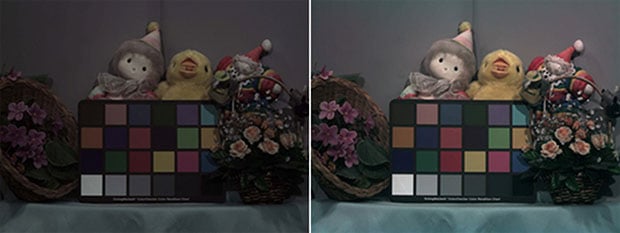Panasonic Doubles Color Sensitivity in Sensors with ‘Micro Color Splitters’
![]()
Panasonic is claiming a major breakthrough in the world of camera sensors, saying that it has doubled the color sensitivity with a new technology called ‘Micro Color Splitters.’
Color filter arrays are ubiquitous and work well, but have the downside of only transmitting some of the incoming light onto the image sensor itself. Much of the light is absorbed by the filter itself (that’s what filters do, right?) — Panasonic says the light loss traditionally sits at 50-70%.
Photography is all about capturing light, so why should cameras throw any of it away?
Panasonic’s new Micro Color Splitters are an alternative to these color filters. Instead of filtering out light, the splitters act as tiny prisms to split the incoming light into red, green, and blue light onto multiple pixels on the sensor. Color information is still captured, just as with CFAs, but a theoretical 100% of light is directed onto the sensor.

So what does capturing 100% of light do for cameras? It greatly improves low light performance. Photographs can be captured with far less noise when shooting in dimly lit environments.
Panasonic says its technology increases camera sensitivity by one whole stop. This means its cameras will theoretically produce the same level of noise at ISO 1600 as Bayer sensor-equipped cameras do at ISO 800.

Another amazing property of the new micro color splitters is that they can simply replace the existing color filter arrays in modern digital cameras — they don’t require specially designed sensors underneath!
The new technology competes against Sigma’s Foveon X3 sensor, which uses three stacked sensors to capture more light information that traditional Bayer sensors. The obvious disadvantage with Foveon technology compared to Panasonic’s new development is that it’s an entirely different sensor rather than a new filter layer above traditional sensors.
No word yet on when we might see Panasonic’s Micro Color Splitters arrive in the real world, but it definitely looks like something we should be looking forward to.